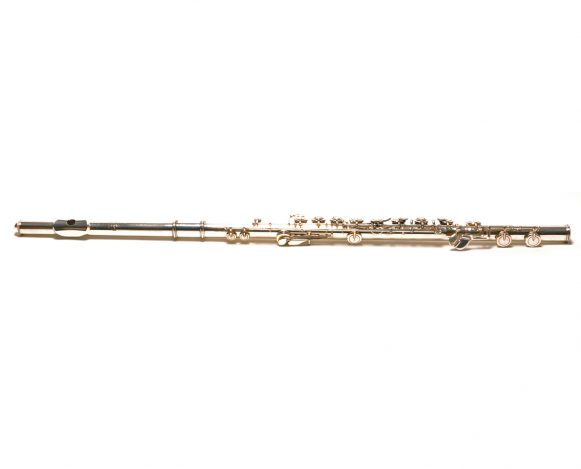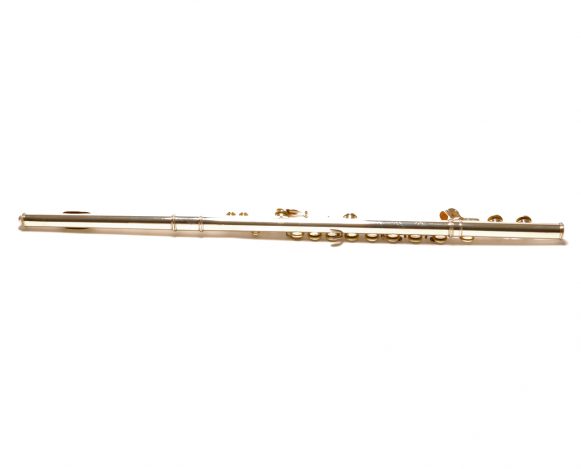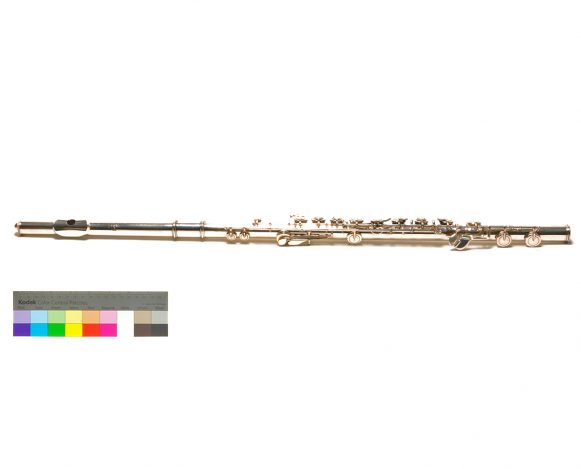





Flute with cylindrical tube made of nickel silver (copper, zinc, nickel and silver alloy) with silver coating. The alto flute’s tube is longer and has a greater diameter than the transversal flute in C. The flute alto has three parts: the head (where the hole through which the musician blows is located, that is the mouthpiece), central joint (where the main keys are located), and the foot or lower joint (containing the keys triggered by the right hand’s pinky finger). The instrument has a box. The tuning is in G and its range goes from G2 to C5.
The alto flute is part of the transverse flute family, along with the piccolo and the bass flute. The alto flute was created by Theobald Boehm (1794-1881) around 1854. The inventor had already done improvements on the transversal flute in C, creating a model which has become the most used up to the present days. The alto flute was particularly used by composers of the 20th century, like Igor Stravisnky (1882-1971) and Toru Takemitso (1930-1936). At present, the instrument is occasionally used in the orchestra, that counts with two transversal flutes in C and sometimes a piccolo.
BERKLEY, 2009.
BETHENCOURT; BORDAS; CANO; CARVAJAL; SOUZA; DIAS; LUENGO; PALACIUS; PIQUER, ROCHA, RODRIGUEZ; RUBIALES; RUIZ, 2012.
BRANDÃO, 2013.
Consulting Franklin Correa da Silva Neto (2014)
DOURADO, 2004.
SADIE, 1994.
MIMO, 2014.








